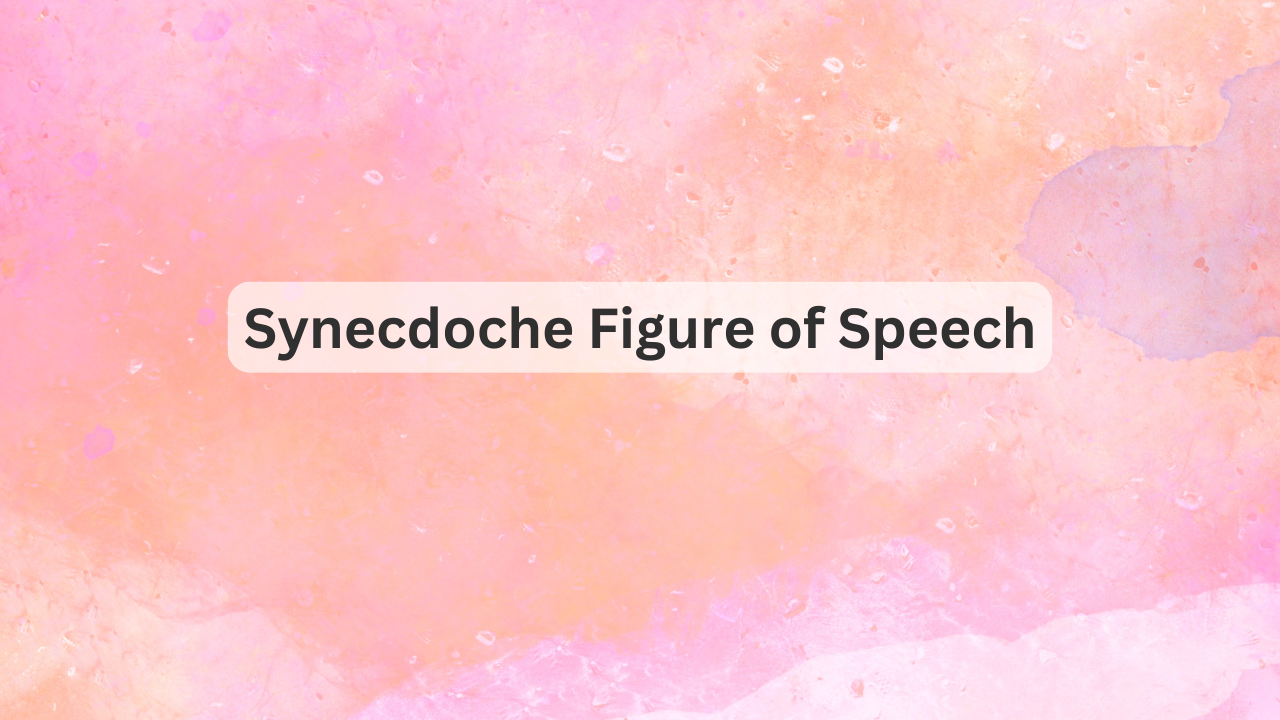Ah, synecdoche—the figure of speech that likes to get clever by letting a part stand in for the whole, or sometimes, the whole represent just a part. Think of it as the language version of shorthand, where instead of naming the entire thing, we zoom in or zoom out to make our point. It’s like saying, “Hey, I don’t need to spell out every detail—you get it.” And honestly, who doesn’t love a little linguistic efficiency?
Let’s dive into synecdoche, where a few well-chosen words can represent a lot more than what they literally describe. Spoiler alert: it’s a lot of fun!
What Is Synecdoche? A Quick Definition
Synecdoche (pronounced sih-NEK-duh-kee) is a figure of speech where a part of something is used to represent the whole, or the whole is used to represent just a part. It’s a linguistic trick that simplifies things, letting you hint at the bigger picture without spelling it all out. For example, calling your car “my wheels” is synecdoche because you’re using a part of the car (the wheels) to represent the entire vehicle.
It’s like language’s version of an inside joke—everyone gets the meaning, even though you’re only showing a piece of it.
Synecdoche Examples That Show the Part (or Whole) Story
- “All hands on deck!”
(They don’t just want your hands—they need your entire body, please and thank you.) - “Check out my new threads.”
(Here, “threads” means clothes, because we’re not talking about actual loose fibers.) - “The White House issued a statement.”
(No, the building didn’t speak—this is synecdoche for the people working inside.) - “She’s got a nice set of wheels.”
(Wheels = car. But you already knew that, didn’t you?)
Why Synecdoche Is So Clever
Synecdoche is the minimalist’s dream—why say more than you need to when a part of something gets the point across? It’s an easy way to create depth and style in language, allowing for nuance without spelling everything out. It can make your writing sound both casual and sophisticated at the same time, depending on how you use it.
Plus, it adds a level of richness to your descriptions, making readers (or listeners) feel like they’re in on the bigger picture without needing every detail explained.
Frequently Asked Questions
What’s the difference between synecdoche and metonymy?
Great question! Synecdoche uses a part to represent the whole (or vice versa), while metonymy involves substituting a word with something closely related to it. For example, using “crown” to represent a king is metonymy, while using “wheels” to mean a car is synecdoche.
Can synecdoche be used in everyday conversation?
Absolutely! People use synecdoche all the time without even realizing it. Whether you’re talking about “the law” to mean police officers or “suits” to refer to businesspeople, it’s a great way to keep things casual and punchy.
Is synecdoche only used in literature?
Not at all! While synecdoche is popular in poetry and prose, it’s also common in everyday speech, journalism, advertising, and even songs. It’s everywhere you look—or listen.
Conclusion
Synecdoche is that sneaky little figure of speech that adds layers to your language, letting a part represent the whole or vice versa. It’s efficient, it’s clever, and it’s everywhere once you know where to look. So, the next time you’re cruising in your “wheels” or hearing from “the White House,” remember—you’re enjoying the playful charm of synecdoche!
